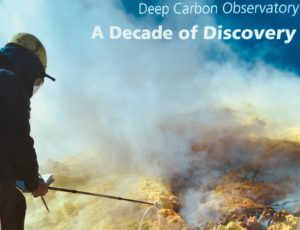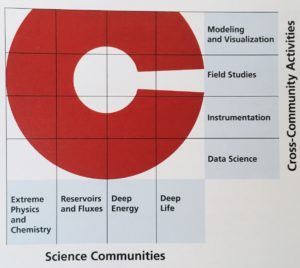November 4, 2019
Deep Carbon, Deep Insights into Research Funding
Posted by Caitlin Bergstrom
 These days, most researchers know very well that in order to get funding, it’s helpful to already have funding. The solemn reality of the grant cycle is that solid preliminary results and immediate applications are what beget federally funded projects. Rarely can you get money for just a neat idea or mysterious question.
These days, most researchers know very well that in order to get funding, it’s helpful to already have funding. The solemn reality of the grant cycle is that solid preliminary results and immediate applications are what beget federally funded projects. Rarely can you get money for just a neat idea or mysterious question.
Seed funding from the government in the form of high-risk grants from agencies like the Department of Energy’s ARPA-E can spur private sector growth, and serve as a strong economic reason to maintain federal investment in fundamental research (neat ideas and mysterious questions). The Deep Carbon Observatory (DCO) is a unique and uncanny example of private sector funding spurring federal investment, and it has many lessons to teach us about creating effective research funding structures. A generous $50M investment from the private sector (the Sloan Foundation) initiated a decade of interdisciplinary research that culminated in October 2019 at the DCO Conference in Washington DC. This decadal project that brought together over 1200 scientists from more than 50 countries has ballooned into a multitude of ongoing federally funded investigations on Earth’s deep carbon cycles, both in the U.S. and abroad. Over $600M has been obtained in continuing support to DCO scientists since 2009.
Dr. Sogin from the Marine Biological Laboratory ended the first morning of the conference by saying that DCO is “the most spectacular interdisciplinary community ever” – a sentiment echoed by many during the meeting. The DCO is emblematic of how relevant philanthropy can be to science, but it’s also a poster child for the effectiveness of “center” grants to accelerate fundamental research questions. Research can no longer be done in isolation: to tackle big questions, the scientific community must come together across multiple disciplines. The National Science Foundation’s Science and Technology Centers (NSF-STC) program funds integrative research centers with seed money of up to $24M over five years, aimed at creating niche communities to address specific scientific problems. However, NSF centers tend to focus on well-supported topics that could use a growth spurt; centers tend to shy away from truly high-risk ideas.
The DCO was a trial run for combining two previously exclusive funding concepts: the idea of a “center” coupled with a broad, high-risk idea. DCO launched in 2009 with the ambitious goal of understanding how carbon inside the Earth plays into and affects global carbon cycles. The results of the effort are truly astounding: from robust measurements of CO2 flux from volcanoes (providing conclusive evidence that our atmospheric carbon problem is definitely anthropogenic), to estimating the total carbon mass under the Earth’s crust (23,000 megatonnes, almost 400 times more than on the Earth’s surface), to discovering new carbon-bearing minerals and the newfangled chemical transformations that they can undergo. The more than 1500 original research articles published during the DCO’s existence speaks to the magnitude of discovery, and the legacy created. In addition to publications, DCO also leaves behind a vast  of open-source data for continued use and progress in the field of deep carbon research.
of open-source data for continued use and progress in the field of deep carbon research.
Moving forward, the knowledge gained at DCO will help inform how we mitigate climate change and transition to clean energy, how we understand subduction zone hazards (the DCO-related “SZ4D” project is currently funded by NSF), and how we approach creating novel materials for storing carbon (inspired by materials discovered deep in the Earth’s crust). The success of the center/high-risk funding combination at DCO is proof that high-risk projects can turn into high-reward projects if they are broad, collaborative, and interdisciplinary. The gratitude felt for the Sloan Foundation at the conference was overwhelming; it illustrates how the promise of ten years of funding can drive big ideas home.
Kasia Kornecki is an intern for AGU’s Public Affairs team. She is a Ph.D. chemist and is interested in policy related to climate, clean energy, and science education.









[…] Fonte/Source: https://blogs.agu.org/thebridge/2019/11/04/deep-carbon-deep-insights-into-research-funding/ […]